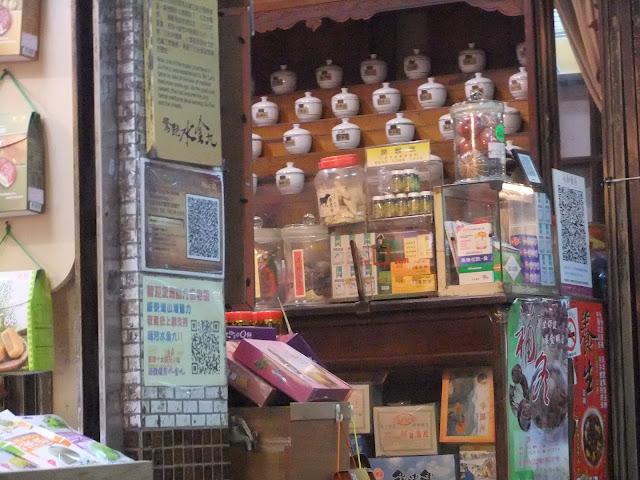 |
| Stone Yakiniku's distinctive building |
Why is there so much Japanese food in Taiwan, you may well ask. To find an answer to that question one only needs to understand a bit of Taiwanese history. In 1895, the Qing dynasty surrendered to the Japanese ending the first
Sino-Japanese war. The Qing dynasty had
failed at its attempt to modernize army of China. For the last half-century the power and influence of the Qing
emperor and his army had been in decline.
This defeat was the harbinger of doom for the dynasty, and the very
early beginnings of the rise to power of the Republic of China. In just sixteen
years, the Wuchang uprising would usher in the Xinhai Revolution and after a
few months of war the dynasty would fall.
 |
| Barbecuing right at the table |
China had changed as a result of this important defeat and one of the
spoils of victory for the Japanese was the island of Taiwan. Taiwan, until the end of the Second World
War, would be operated as a Japanese colony, so it is no surprise that Japanese food is so popular here. There are many restaurants that serve
Japanese food, but one of the most interesting in my mind is the Japanese
barbecue, or Yakiniku.
Bade City has a number of Yakiniku restaurants, but my favorite is a
brand new one called Stone Yakiniku. It’s
located on the corner of Jie Shou Lu and Jinhe Lu, across from the tennis
courts.
 |
| The start of the Hot Pot |
The way it works is that you choose a level of the menu that you
want. There are three price
structures. The highest price is $639
NTD. The food served is all you can
eat. The waitresses will bring you a
starter of Beef, Pork and Chicken and you barbecue it yourself in a charcoal
pit built right into the table. Shrimp
and seafood are also available for those who ask, and the menu also includes
Hot Pot at no extra charge, which is also heated right there at the table. Most places have a hood over the pit to pull the smoke, but they're noisy, in your face and real hindrance to conversation. This restaurant has fans built right into the table, they're silent and extremely effective.
Throughout your meal, whenever you need more meat, or seafood to
barbecue, you press the buzzer and the waitress comes to see what else you
would like. Soft drinks are, "All You Can Drink," and included with your meal.
Haagen Daz ice cream is also included with your meal. That’s pretty special, but what really makes
Stone Yakiniku the premiere yakiniku restaurant in the Bade-Taoyuan area s that
you can also get sashimi and sushi, made to order and it is also included in
the price.
The atmosphere is noisy and fun.
I like those restaurants where you hear all the commotion and people
enjoying themselves. The wait staff are
young and lively and make an enjoyable experience. The service they provide is excellent. If you don’t speak Chinese
you can make it work because there are a few who will enjoy practicing their
English on you.
Other posts you may be interested in:




































